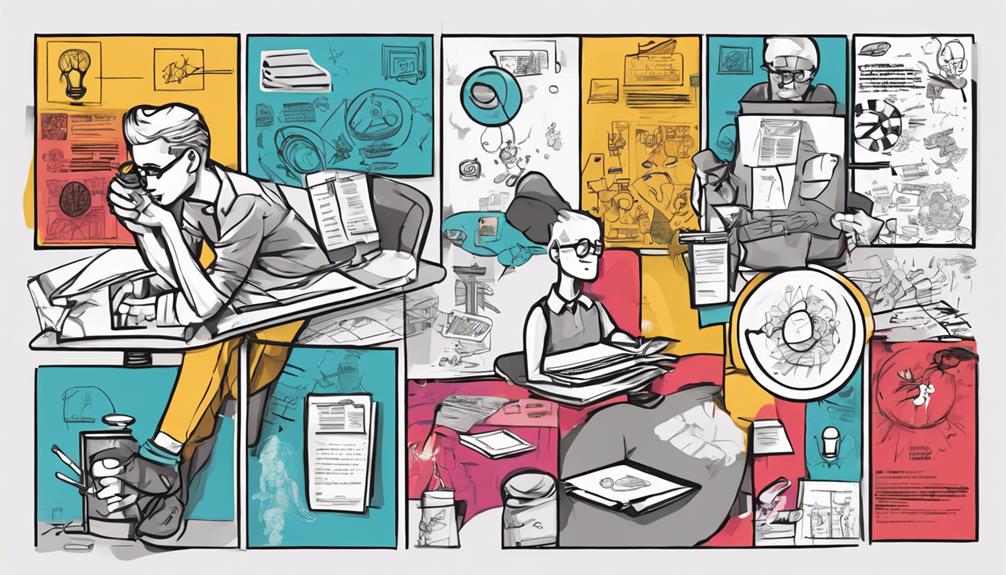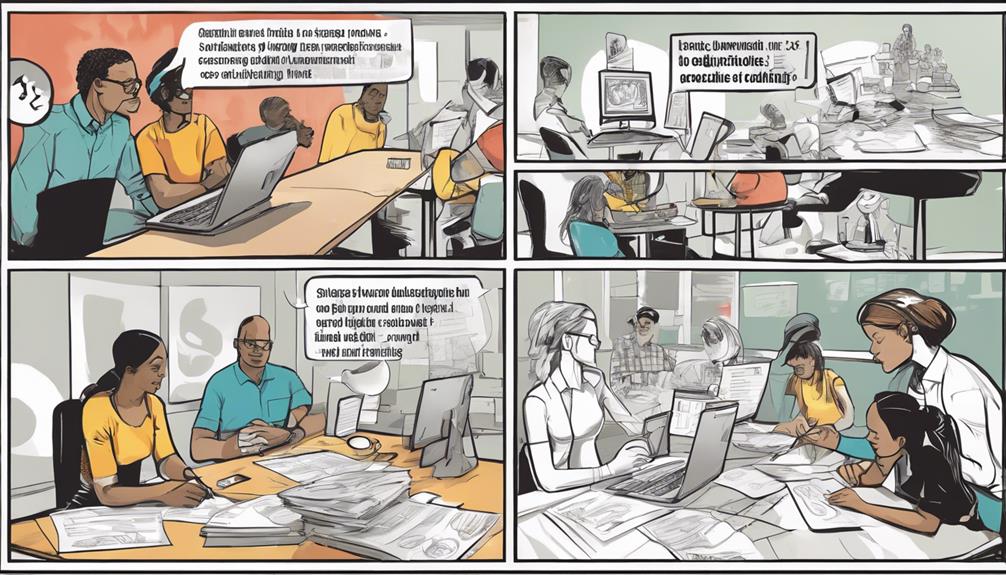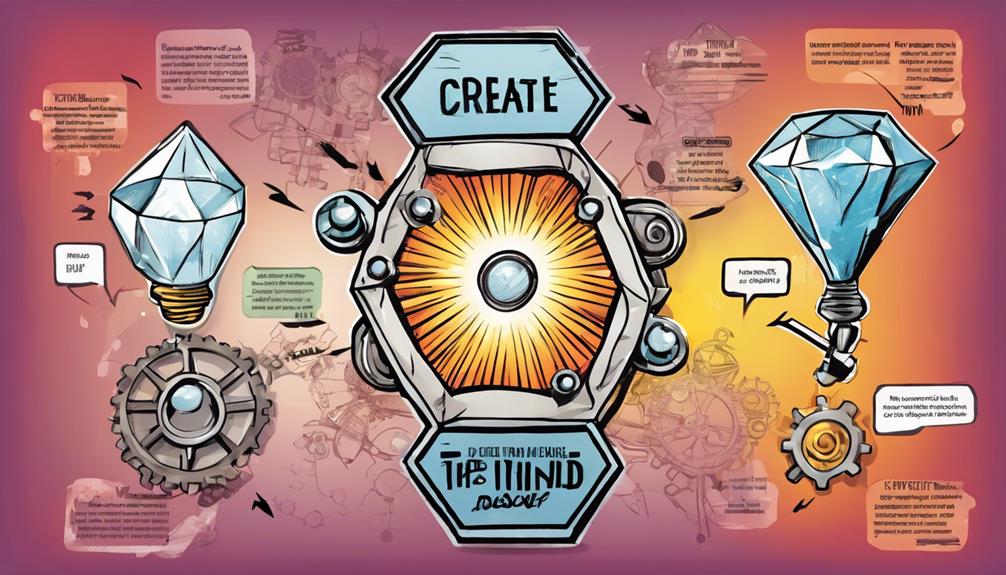Master the 5 phases of design thinking to craft user-centric solutions addressing real needs. Start by grasping users' perspectives through empathy and detailed research. Define clear problems pinpointing key issues for effective ideation. Foster creativity and collaboration to generate diverse solutions aligned with user needs. Transform ideas into tangible prototypes, gathering early feedback for refining. Test and iterate solutions incessantly, ensuring they resonate with users for best results. By mastering these phases, you'll develop a deep understanding of design thinking essential for successful projects.
Key Takeaways
- Empathize with users to understand their needs deeply.
- Define the problem clearly based on user insights.
- Generate creative solutions through collaborative ideation.
- Create tangible prototypes to test and refine ideas.
- Test and iterate solutions based on user feedback for continuous improvement.
Understanding Users' Needs
Understanding users' needs is a foundational step in the design thinking process, essential for creating successful and user-centric solutions. Empathy plays a critical role in gaining deep insights into users' perspectives.
Conducting user research, including observations and interviews, is key to uncovering user pain points effectively. By delving into users' emotions, motivations, and behaviors, designers can develop a profound understanding that's pivotal for successful design outcomes.
The Empathize phase sets the groundwork for creating solutions that truly cater to users' needs and desires. By immersing yourself in the users' world, you can better comprehend their challenges and aspirations. This empathetic approach enables you to design solutions that address real user problems and enhance their overall experience.
Prioritizing user-centricity from the outset guarantees that the final design resonates with users on a deeper level, ultimately leading to more impactful and successful outcomes.
Defining Problems Clearly

To effectively advance through the design thinking process, make sure that problems are defined clearly to direct the ideation phase with purpose and focus.
When defining problems clearly, remember to:
- Analyze Observations: Utilize insights gathered during the empathize stage to identify key issues and challenges faced by users.
- Create Human-Centered Statements: Develop problem statements that are focused on addressing the needs and experiences of the users.
- Set a Clear Direction: Establish a concise and unambiguous problem definition to guide the ideation phase towards relevant solutions.
- Provide a Framework for Solutions: Clear problem definition serves as a foundation for the team to brainstorm and generate creative ideas aligned with user needs.
Generating Creative Solutions
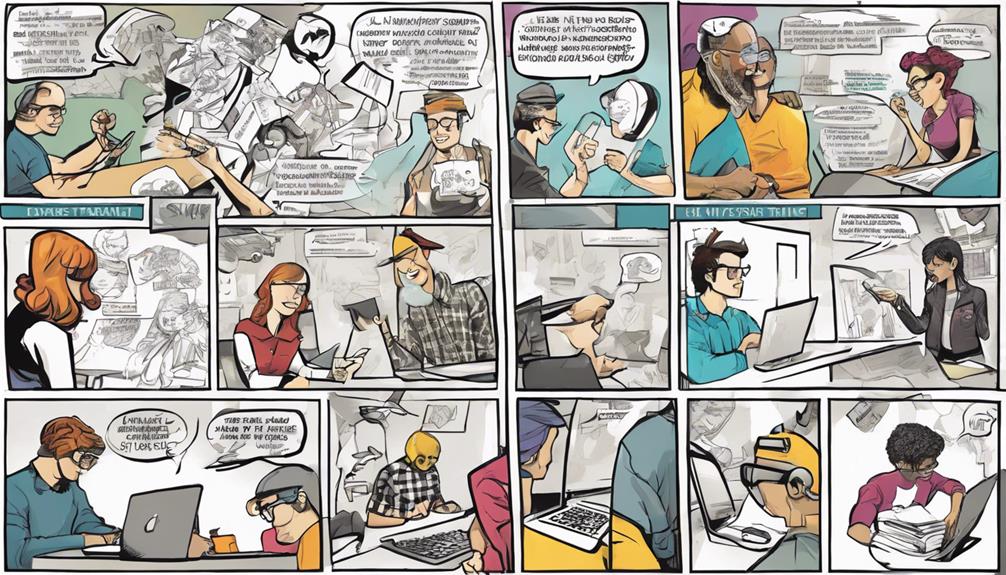
Begin by fostering a culture of creativity and collaboration to effectively navigate the ideation phase in design thinking.
During this phase, the focus is on generating a wide range of creative solutions to the defined problem. Encouraging a free flow of ideas without judgment allows for innovative and unconventional solutions to emerge.
Brainstorming sessions involving team members or stakeholders sharing and building upon each other's ideas are essential. Techniques like Challenging Assumptions and Mind Mapping are commonly used to stimulate creativity and explore different perspectives.
The ideation phase is vital as it provides the fuel needed for the prototyping stage, where ideas are turned into tangible solutions for testing. By embracing diverse perspectives and thinking outside the box, you can uncover unique and effective solutions that address the problem at hand.
Creating Tangible Prototypes

Start by transforming your innovative ideas into tangible prototypes that will pave the way for testing and refining potential solutions in the design thinking process. Prototyping is a critical phase that allows you to create tangible representations of your concepts, enabling early feedback and iteration.
Here are some key points to keep in mind:
- Variety of Prototypes: From low-fidelity sketches to high-fidelity interactive models, explore different levels of prototypes to visualize solutions effectively.
- Gather Early Feedback: Use prototypes to gather early feedback from users and stakeholders, helping you refine your ideas based on real-world insights.
- Validation of Assumptions: Prototyping helps validate assumptions made during the ideation phase, ensuring your solutions align with user needs.
- Iterative Refinement: Continuously refine your prototypes based on feedback and insights, iterating on solutions to achieve best outcomes efficiently.
Testing and Iterating Solutions
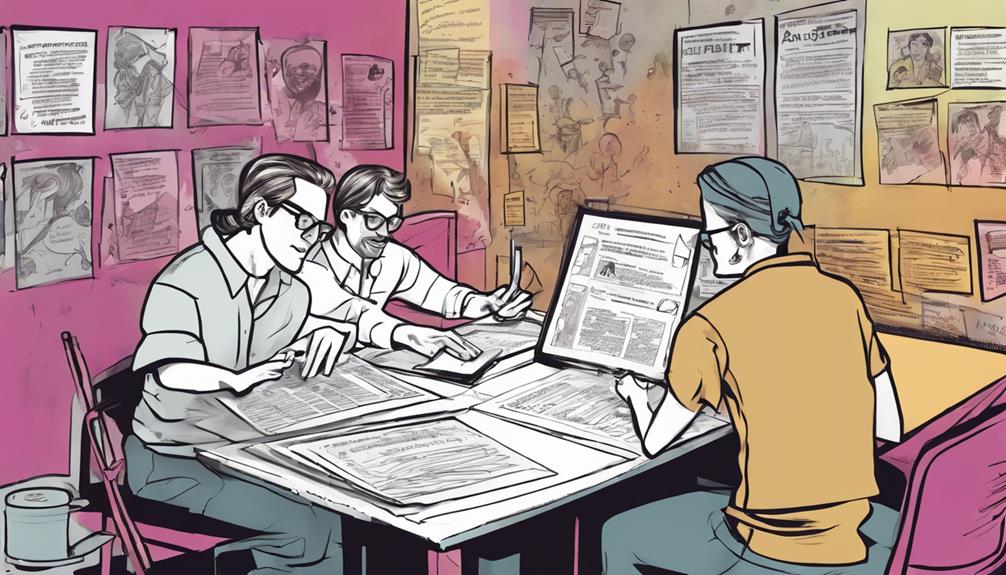
How can you guarantee the effectiveness of your solutions in the design thinking process?
Testing and iterating solutions play a pivotal role in ensuring that your design meets user needs. Through iterative testing, you can continuously improve your prototypes based on user feedback.
By subjecting prototypes to rigorous testing, you can identify flaws and make necessary adjustments before final implementation. This process helps refine your understanding of user behaviors and preferences, allowing you to tailor your solutions accordingly.
User feedback is invaluable in guiding the refinement of prototypes, leading to more user-centric designs. Embracing continuous improvement through testing enables you to create solutions that truly resonate with your target audience.
Frequently Asked Questions
What Are the 5 Areas of Design Thinking?
To master Design Thinking, you need to understand its 5 key areas: Empathize, Define, Ideate, Prototype, and Test. These phases guide you in uncovering user needs, defining problems, generating ideas, creating solutions, and validating them.
What Is the 5d Design Process?
The 5d Design Process consists of five stages: Discover, Define, Develop, Deliver, and Debrief. Each stage is crucial in creating innovative solutions. Start by understanding the problem and user needs in Discover.
What Is the Five Mode Design Thinking Model?
The five mode design thinking model involves Empathize, Define, Ideate, Prototype, and Test stages. It guides you through understanding user needs, defining problems, generating ideas, creating prototypes, and testing solutions for effective problem-solving and innovation.
What Is the IDEO 5 Step Design Thinking Model?
To understand the IDEO 5 Step Design Thinking Model, you should explore its stages: Empathize, Define, Ideate, Prototype, and Test. This human-centered approach revolutionizes problem-solving by prioritizing user needs and fostering innovation.
Conclusion
Now that you've learned the 5 phases of design thinking, remember that Rome wasn't built in a day. Practice makes perfect, so keep honing your skills and pushing the boundaries of creativity.
By mastering these phases, you'll be able to tackle any design challenge with confidence and innovation. Embrace the process, trust in your abilities, and watch your ideas flourish like a well-crafted masterpiece.
The world is your canvas – go forth and create!

